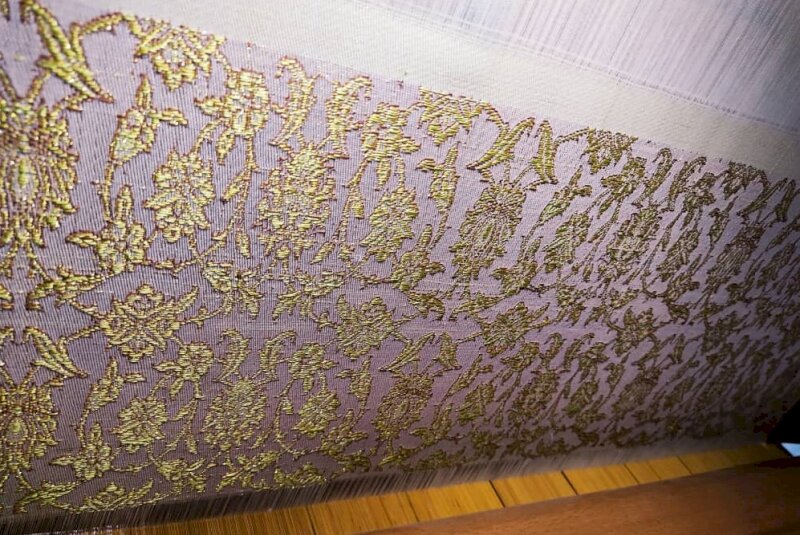Brocade weaving revived in small village northeast Iran

TEHRAN – Brocade weaving has been revived in Besk to empower local crafters and related businesses in the northeastern Iranian village, which is situated in Torbat-e Heydarieh county.
“This measure is taken to restore the added value and profitability of this strategic product of the village to the hardworking people of this region,” a local official announced on Sunday.
“The revival, education and production of Zaribafi (‘Brocade weaving’) and related industries such as silk weaving, fine weaving, ribbon weaving and other traditional and artistic handicrafts were put on the agenda after the village of Besk was added to the National Cultural Heritage list,” the official explained.
Brocade is a class of richly decorative shuttle-woven fabrics, often made in colored silks and with or without gold and silver threads. Brocade is typically woven on a drawloom. It is a supplementary weft technique; that is, the ornamental brocading is produced by a supplementary, non-structural, weft in addition to the standard weft that holds the warp threads together. The purpose of this is to give the appearance that the weave was embroidered on.
Ornamental features in brocade are emphasized and wrought as additions to the main fabric, sometimes stiffening it, though more frequently producing on its face the effect of low relief. In some, but not all, brocades, these additions present a distinctive appearance on the back of the material where the supplementary weft or floating threads of the brocaded or broached parts hang in loose groups or are clipped away. When the weft is floating on the back, this is known as a continuous brocade; the supplementary weft runs from selvage to selvage. The yarns are cut away in cutwork and broché. Also, a discontinuous brocade is where the supplementary yarn is only woven in the patterned areas.
Iran exported $523 million worth of handicrafts during the past calendar year 1398 (ended March 19). Of the figure, some $273 million worth of handicrafts were exported officially through customs, and about $250 million was earned via suitcase trade (allowed for customs-free and tax-free transfer) through various provinces, according to data provided by the Ministry of Cultural Heritage, Tourism and Handicrafts.
Ceramics, pottery vessels, handwoven cloths as well as personal ornamentations with precious and semi-precious gemstones are traditionally exported to Iraq, Afghanistan, Germany, the U.S., the UK, and other countries.
AFM/
Leave a Comment